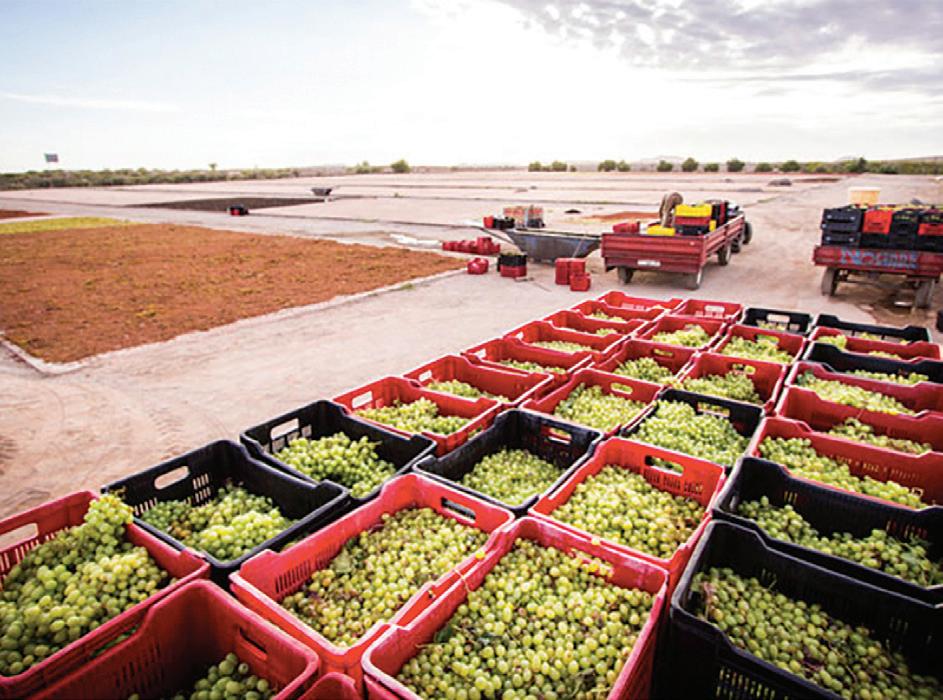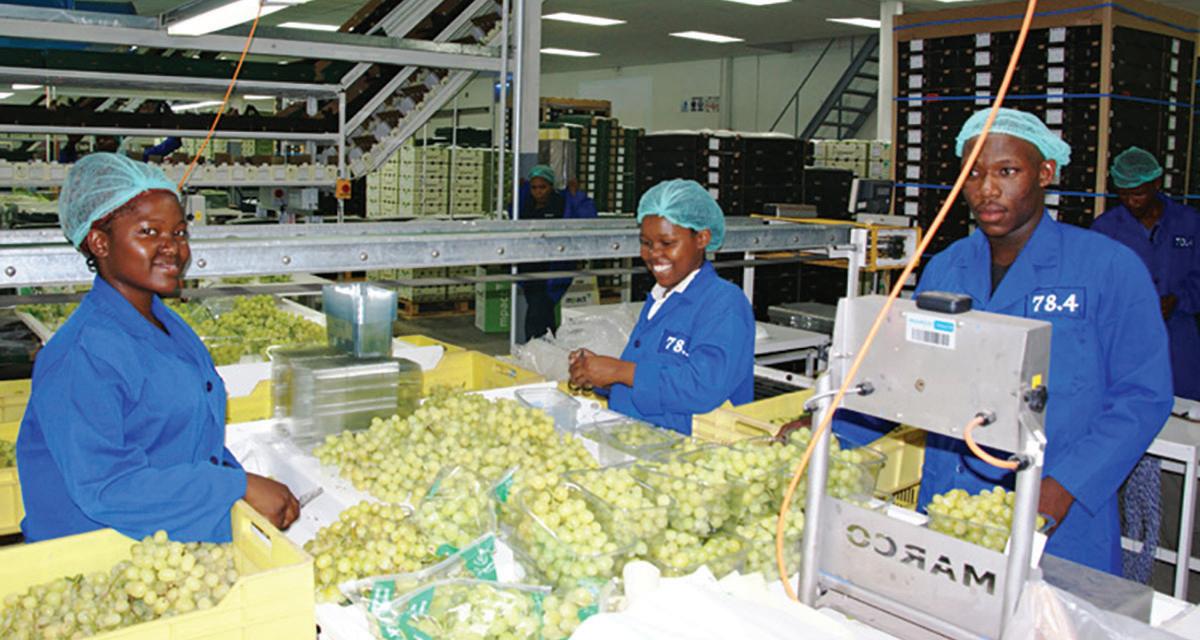
4 minute read
Grapes and wine
China and Southeast Asia are growing export markets.
Credit: Carpe Diem Group
Advertisement
Exports of South African grapes and wine to China have been on an upward trend for several years. The imposition in 2020 of prohibitive tariffs on Australian imports by China as part of a damaging trade war should help to boost that trend.
South Africa’s wine exports are still subject to tariffs on entering
China, despite both countries being members of BRICS.
Dippenaar Choice Fruit, an Orange River region grape producer which is headquarted in Kakamas, already exports to seven countries in Southeast Asia and the Far East, including China and Singapore. An instructive feature of the company’s website is the Chinese language option. The company farms seedless grapes on eight farms along the
Lower Orange River.
Although the province has just 3% of South Africa’s vineyards, 18% of the nation’s white wine grapes are cultivated along the Orange River.
Within the region, about 64% of grapes are white seedless and about 21% are red seedless (SATI).
The Dippenaar group is also using drone technology, as evidenced by the impressive photograph that appears on the cover of this journal.
The Premier of the Northern Cape referenced drone technology in his most recent State of the Province Address, referring to their becoming “an appliance for agricultural monitoring. The Northern
Cape Innovation Forum has been tasked with helping to usher in new technologies in the province in a way that does not create unintended consequences such as job losses.
The word “audit” is normally associated with financial institutions or public bodies that must account for their expenses. But for the grape farmers and wine producers of the Northern Cape, meeting health standards is a serious business vital for access to lucrative export markets.
For grape producers, the HACCP team is a vital element in operations. HACCP stands for Hazard Analysis and Critical Control Points. Among the audits which these teams oversee are the BRC (British Retail Consortium) Version 8 Audit and SiZA, the Sustainability Initiative of South Africa. According to the website of Carpe Diem Estate, which includes raisins among its production activities (pictured), the group’s farming and packing activities are certified for GlobalGAP, Organic and Ethical.
The region as a whole has 5 688ha of vines and the Orange River Producer Alliance represents its farmers. According to the South African Table Grape Industry (SATI), the grape industry in the Northern Cape employs 1 215 people permanently, with a further 12 415 people finding seasonal work. Harvesting happens from early November to early February.
SECTOR INSIGHT Drone technology is assisting farmers.

Dippenaar Choice Fruit has four pack houses, the largest of which has a daily packing capacity of 20 000 cartons. Credit: Dippenaar Choice Fruit
Almost a third of South Africa’s table grape crop is produced in this fertile region. The South African table grape industry has been investing in hardier varietals which produce a better yield. A variety of seedless grapes dominate plantings, with Thompson Seedless, Prime, Sugraone, Grapaes and Crispy Flame Seedless among the most popular.
If ambitious plans to create a Special Economic Zone at Upington come to fruition, the grape, raisin and wine traders of the Northern Cape could get their products to market more quickly.
There are plans to add 40 000 tons of grapes for wine, juice and raisins to the Northern Cape’s capacity. A draft six-year plan has been developed for the Northern Cape Vineyard Development Scheme.
Of the Sultana grapes grown in the Lower Orange River Region, 70% are used for vine-fruit products. There are 1 250 Sultana grape growers in the province, producing three Sultana-type grapes which rank among the best in the world: the Sultana Clone H5, a new hybrid called Merbein Seedless, which has proved resistant to splitting after rain, and the most popular type, the 143B.
Rain is almost always good news for farmers, but its timing can bring bad tidings for grape farmers. In just two days in January 2021 Kakamas received 1 000mm of rain but packing of table grapes had not yet been completed. However, the geographical diversity of the region is such that crop estimates in March 2021 still suggested the region would produce more than 18-million cartons, a good return.
ONLINE RESOURCES
Northern Cape Department of Agriculture, Land Reform and Rural Development: www.agrinc.gov.za Raisins South Africa: www.raisinsa.co.za South African Table Grape Industry: www.satgi.co.za SA Wine Industry Information & Systems: www.sawis.co.za Wine
The Northern Cape’s Orange River wine region accounts for 25.6% of South Africa’s Colombard vines and 10% of Chenin Blanc. The focus is on Colombard and Hanepoot grapes.
Orange River Cellars (ORC) is the region’s biggest producer, sourcing its grapes as it does from 850 grape producers in the area known as the Green Kalahari. ORC has a winery at its head office in Upington and a further four at Keimoes, Groblershoop, Kakamas and Grootdrink.
Orange River Concentrate Producers (part of the ORC group) produces about 7.5-million litres of white grape juice concentrate, a percentage of which is exported to Japan where the Itochu Corporation uses it in soft drinks and food.
The Douglas Wine Cellar produces about 6 000 cases per year. Together with the Landzicht cellar (just over the border in the Free State), the Douglas Wine Cellars is a GWK company. The Douglas cellar crushes 7 000 tons of grapes every year and produces 5.6-million litres of wine.
Hartswater Wine Cellar is a part of the region’s other big agricultural company, Senwes. Two wine brands (Overvaal and Elements) are produced in the Hartswater irrigation area north of Kimberley.
Vinpro is an organisation that 2 500 South African wine grape producers, wineries and winerelated businesses. ■










